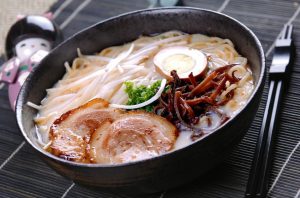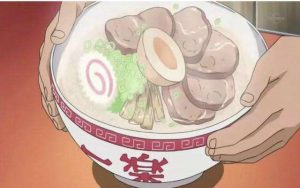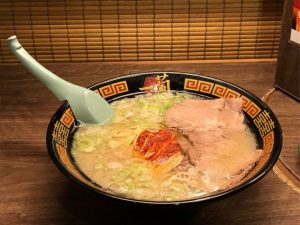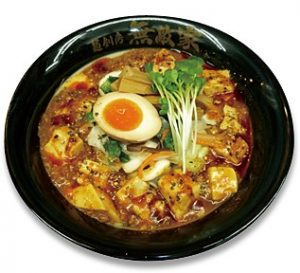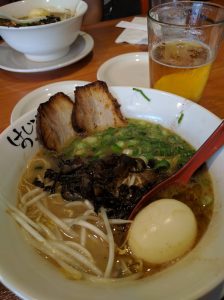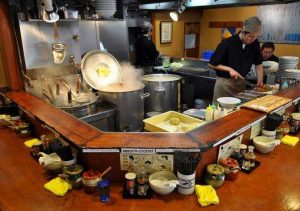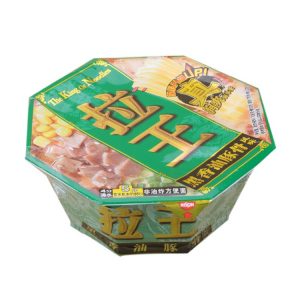Since I first learned about intersectionality, I have been interested in finding out more about how the concept impacts the daily lives of people from all around the world, from various walks of life, and overall from very different backgrounds. The idea of intersectionality ties in well with the anthropological concept of marked and unmarked categories, which transcend cultures, religions, and geographic locations. Creating a working definition of marked and unmarked categories is key to understanding the basis by which I will discuss this topic, and how it relates to international food studies. For the purposes of this paper, I define a marked category as one which stands out in the particular context of the situation. While many people do not refer to these categories by any sort of specific definition, they play a very important role in our everyday lives and how we view those around us. Until recently, I did not fully grasp how the concept of context can fully shape what is considered marked or unmarked in a specific situation. While it may seem obvious that normal ideas about migration and food in one society might not translate perfectly to another, these categories do not follow this often simplified differentiation in various surroundings. It is true that what may be considered marked in one situation revolving around food and migration may be unmarked in another; however, the group that holds power greatly differs within any given situation. The idea of marked and unmarked categories is especially important to analyze within the context of migration studies as well as food studies. When considering immigrants, it is important to note that those who migrate are not always the marked category nor those who lack power in a specific situation. That being said, in many studies that intersect with analysis of migration, such as food studies, it is those who migrate who often fall into marginalized and oppressed groups. Food studies and specific topics within this larger umbrella provide vehicles for analysis of intersectionality, marked and unmarked categories, and food security. Through analysis of literature surrounding food studies and immigration, we are able to gain a better understanding of how intersectionality plays a critical role in the development of marked and unmarked categories within migration and food studies.
While many say that the force of intersectionality is diminishing in power throughout the world, it still remains the dominant factor in the status of millions of people. With socioeconomic class, ethnic background, sex, gender, religion, and other factors possibly playing into a person’s role in many societies, certain groups of people are often unable to voice their opinions safely and effectively. This leads to regions and sometimes whole nations where certain groups of people are considered inherently beneath others and deemed inferior. One arena in which this is seen most is studies surrounding food security. Food security, as defined by the International Food Policy Research Institute (IFPRI) (on its website about the topic), is “the condition to which all people, at all times, have physical, social and economic access to sufficient, safe, and nutritious food that meets their dietary needs and food preferences for an active and healthy life.”
Food security is vital to the successful development of a region and/or nation. IFPRI reflects on the fact that “economic growth is only sustainable if all countries have food security. Without country-owned or country-driven food security strategies, there will be obstacles and additional costs to global, regional, and country-level economic growth. Food security needs to encompass women … and vulnerable and disadvantaged groups.” Whether through government policies (such as the indirect forcing of migrants into specific areas of a certain city or region), or through social interactions between groups, the force of intersectionality directly impacts which people or groups have complete food security in the context of their region. In addition, the lack of inclusion of voices of people from historically marginalized groups within food studies furthers the problems that have already been created surrounding access to food.
When first considering how food studies (and furthermore, food security) was linked to migration, I wondered which had more impact on the other. Did food insecurity cause people to migrate, or did migration somehow cause food insecurity? Arup Maharatna, in his article “Food Scarcity and Migration: An Overview,” discusses how “migration as we know it, both at the household and collective levels, is essentially a response to crisis situations (for example, food scarcity)” (Maharatna 2). This ideology makes sense, as history has seen many large movements and diasporas of people as a response to specific incidents – such as national disasters and famines. While Maharatna’s viewpoint seems to be part of the idea that food scarcity, among other issues, can cause widespread migration, I believe that because of intersectional forces, migration also impacts food security.
Due to intersectionality and the way it works in countries around the world, those who are oppressed and marginalized because of one facet of their identity (such as race, religion, socioeconomic status, sexual orientation, or gender) are more likely to be in others as well. As a result, people who come from low socioeconomic statuses and migrate, for example, are at a very high risk of being affected by food insecurity. Walter Imilan, in “Performing national identity through Peruvian food migration in Santiago de Chile,” describes how “food and the activities surrounding it are not only a resource for economic integration, but also act as a mediating factor in the re-creation of a national identity. Migrants indeed use food as a way of performing their national distinctiveness from the host society” (Imilan 1). Therefore, when migrants are seen as the marked category indirectly restricted from access to fresh and healthy food because of various factors, a domino effect begins to take place. This effect passes onto national identity and more.
Food security has often only been discussed in the context of rural settings; there is a significant lack of academic analytical work surrounding food security of migrants and groups who do not identify as being from rural communities. Jonathan Crush, in “Linking Food Security, Migration, and Development,” discusses how “if the global migration and development debate sidelines food security, the current international food security agenda has a similar disregard for migration. The primary reason for this is the way in which “food security” is currently problematized. The overwhelming consensus seems to be that food insecurity is primarily a problem affecting the rural poor and that the solution is a massive increase in agricultural production by small farmers” (Crush 62). Crush brings up an important topic that is rarely discussed in the fields of food or migration studies: by considering only the rural poor as those affected by food security, experts are failing to analyze major problems facing millions of migrants all around the world and the ways that they are able, or in fact unable, to access healthy and fresh food on a consistent basis.
Analyzing food security and how it can impact migration, and vice-versa, could have a major beneficial impact on how studies surrounding food and migration studies are viewed; as a result, there could be a much better widespread understanding of motives for migration and how these are associated with issues related to food. Crush states that “the implications of the new mobility regime for food security in general (and urban food security in particular) need much further exploration and analysis. To what degree is heightened mobility related to problems of food insecurity? Food security shocks and chronic food insecurity can certainly be major motives for migration for income-generating opportunity” (71). Crush’s analysis sheds light on the fact that there is little to no analysis of food insecurity within migrant communities around the world. For this reason, we can see migrant communities as the marked categories and/or the marginalized group in this context. By giving more people in this group the chance to share their stories about food and their access/lack of access to fresh food, we would be able to have a better understanding of why, and perhaps more importantly, how, food insecurity and migration are linked.
By giving marginalized peoples a larger voice in the academic fields of migration and food studies, there would be a better understanding of issues facing certain groups, which are currently rarely discussed. Irma McClaurin, in her writing, reflects on how through academic writing, people from historically marginalized groups can regain the power that has been taken from them; this could be seen as an especially effective in migration and food studies, where migrants are often forced to give up their national identities and sometimes their gastronomic traditions as a result of their new home. McClaurin notes that “[people from oppressed groups], ever marginal to the authoritative discourse, cannot sit at the dining room table because they were never invited” (McClaurin 50). She brings up an important topic: the tendency in academic works to write about people from marginalized groups or the groups as a whole without having a first-hand perspective. While many authors of articles surrounding food studies and migration studies have completed large studies involving interviews with people within these groups, the authors themselves often identify as being from an unmarked group within society.
This reinforces a power structure within food and migration studies, as well as academia as a whole, that causes “minority scholars [to] still struggle for credibility … [and] battle a rising tide” (McClaurin 52). Until recently, these scholars had to seek validation from people in power, thereby falling victim to the social systems which they were writing about. While a hierarchy based on power continues to exist in academia, alongside other disciplines, many would argue that, with the increasing numbers of people from marginalized groups sharing their works and ideas, a slow blockage of the centuries-old power system within academia, specificically migration and food studies, is beginning to form. In addition, this problem of the norm of authors within academia has finally been uncovered for discussion and analysis.
Reflecting on the new era of accepted authors within academic disciplines, McClaurin highlights the idea that when people from groups which have historically been oppressed by society contribute to pieces such as an autoethnography, they are “[promoting their] interpretations of [their world] as authentic without the validation of other social scientists” (McClaurin 67). This statement represents the complete takeback of power from those in control and from the dominating structures that our society has created in fields of academia — in other words, a marking of these structures. Furthermore, by shifting the focus away from those who have historically held power, societal issues such as oppression and marginalization of marked groups are underscored. While these topics of power, intersectionality, and oppression may seem distant from food studies, I believe that they go hand in hand. My giving more people from certain groups a larger voice within academia, and specifically food studies, we would gain perspectives that are currently widely lacking. By doing so, there would be an ability to have increased analysis, and therefore, a better understanding of how food can affect migration and vice-versa.
The academic disciplines of food studies and migration studies can be easily related back and tied into the anthropological concepts of marked and unmarked categories as well as the overarching force of intersectionality. The disparities between groups who have food security and those who do not often come down to societally created power differentials that exist in groups, nations, regions, and societies around the world. While many societies worldwide are experiencing changes in power differentials between unmarked and marked groups, few focus on the works created by people from marked categories – often people who have been marginalized and oppressed. When societal norms that have existed for decades or even centuries are disrupted, underlying themes of oppression and marginalization are often brought to light. Power shifts away from those who have historically held it sparks conversations about the history and social structures of those who have been downtrodden. As we can see through academic writing in the fields of migration and food studies and beyond, the need to analyze works surrounding food security written by people from marginalized groups is greater than ever, and a deep understanding of these works could empower people in marked groups, helping to ensure food security for more groups of people around the world, on a consistent basis.
Works Cited
Crush, Jonathan. “Linking Food Security, Migration and Development.” International Migration, vol. 51, no. 5, Oct. 2013, pp. 61-75. EBSCOhost, doi:10.1111/imig.12097.
“Food Security.” International Food Policy Research Institute, www.ifpri.org/topic/food-security.
Maharatna, Arup. “Food Scarcity and Migration: An Overview.” Social Research, vol. 81, no. 2, Summer 2014, pp. 277-298. EBSCOhost, doi:10.1353/sor.2014.0026.
McClaurin, Irma. 2001. “Chapter 2: Theorizing a Black Feminist Self in Anthropology.” Essay. In Black Feminist Anthropology: Theory, Politics, Praxis, and Poetics.
Milan, Walter A. “Performing National Identity through Peruvian Food Migration in Santiago De Chile.” Fennia, vol. 193, no. 2, June 2015, pp. 227-241. EBSCOhost, doi:10.11143/46369.

